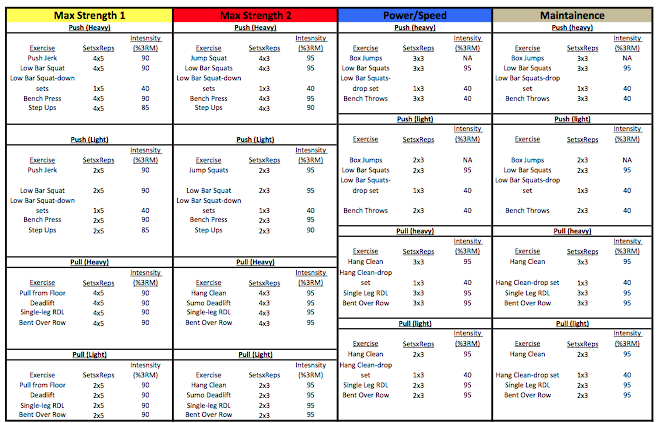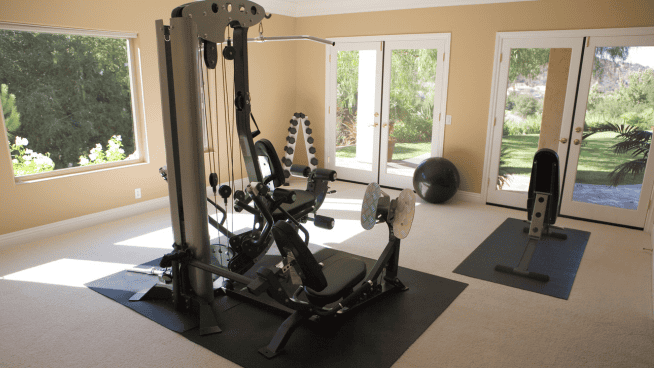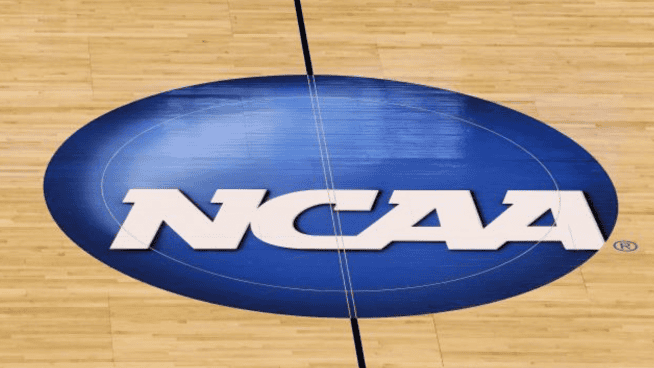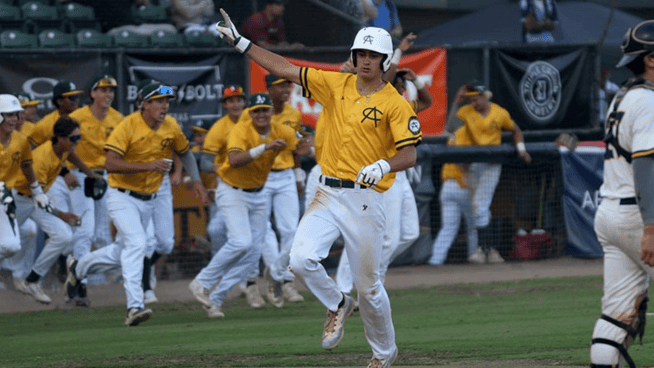Complete Track Training Plan, Part 2: The Competition Phase
![]()
This is the second installment of the annual track training plan for triple jump athletes. Following the preparatory phase, the competition phase is a 32-week block divided into two sub-phases—an early competition phase (the indoor season) and the main competition phase (the outdoor season).
The early competition season is 12 weeks long and includes mostly less importance events. It serves as an evaluation of the athlete’s progress. This phase is divided into three 4-week segments focused on development of max strength and power. Since speed and power are big determiners of success, we want to ensure that this phase is potentiated correctly. We know that the gains made in the previous phase serve as a foundation to enhance the gains made in the next phase, so the sequencing is logical for developing such a critical component of this event. For the same reason, the last 2 weeks of the early competition phase begin with an intense power and speed segment that continues into the first three weeks of the 16-week main competition phase. The main competition phase consists of 16 weeks of racing, mild tapers and low-volume maintenance of resistance training.

Professional triple jumpers have hectic schedules, with lots of travel and many unique considerations. Planning consists of programming specific workouts that fit with the schedule. This phase includes slight tapers for a qualifying meet, then a deliberate taper for peaking at the Olympic Games in week 44. Post-peak, there are three more weeks of maintenance for remaining competition, followed by the end of a season and a five-week transition phase.

Below is a calendar that shows how the above workouts can be programmed into the week, taking into consideration travel time, event dates and other factors. As you can see in the list of event dates above, some of the events are weighted more heavily than others. As a result, athletes end up training close to and sometimes even through an event that is a lower priority, so that they can appropriately perform at the event that matters most to them.



RECOMMENDED FOR YOU
MOST POPULAR
Complete Track Training Plan, Part 2: The Competition Phase
![]()
This is the second installment of the annual track training plan for triple jump athletes. Following the preparatory phase, the competition phase is a 32-week block divided into two sub-phases—an early competition phase (the indoor season) and the main competition phase (the outdoor season).
The early competition season is 12 weeks long and includes mostly less importance events. It serves as an evaluation of the athlete’s progress. This phase is divided into three 4-week segments focused on development of max strength and power. Since speed and power are big determiners of success, we want to ensure that this phase is potentiated correctly. We know that the gains made in the previous phase serve as a foundation to enhance the gains made in the next phase, so the sequencing is logical for developing such a critical component of this event. For the same reason, the last 2 weeks of the early competition phase begin with an intense power and speed segment that continues into the first three weeks of the 16-week main competition phase. The main competition phase consists of 16 weeks of racing, mild tapers and low-volume maintenance of resistance training.

Professional triple jumpers have hectic schedules, with lots of travel and many unique considerations. Planning consists of programming specific workouts that fit with the schedule. This phase includes slight tapers for a qualifying meet, then a deliberate taper for peaking at the Olympic Games in week 44. Post-peak, there are three more weeks of maintenance for remaining competition, followed by the end of a season and a five-week transition phase.

Below is a calendar that shows how the above workouts can be programmed into the week, taking into consideration travel time, event dates and other factors. As you can see in the list of event dates above, some of the events are weighted more heavily than others. As a result, athletes end up training close to and sometimes even through an event that is a lower priority, so that they can appropriately perform at the event that matters most to them.













